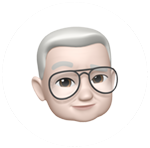

In the last blog we covered things to consider for a smart home. This article is to capture the vision of a home that is beyond app and voice.
Connectivity and access to information has made the Internet one of the largest technological revolutions of this era. Combined with highly integrated and power efficient electronics we now have powerful handheld computing devices that can connect with other devices and be easily controlled.
This has enabled the smartphone to become much more than a phone, it is the hub that allows us to use apps and voice control with our many connected products. Some of these products have made large impacts to our daily lives, but even in 2023 we continue to have to perform menial tasks, why?

Here are some real examples:
Unfortunately, such experiences are as yet only seen in movies or showcased in articles about a wealthy person’s high-tech home.
The main reason is the base product requirements and built-in intelligence, viz:
Paradigm shifts occur only when we experience a new and better way to do things. Take the example of chatGPT as a revolutionary way of how we can interact with an AI platform that goes beyond simple keyword-based searches.
Much of the necessary technology already exists, or is just around the corner, to make intelligent products cost effective
The question is will others adopt product strategies to enable AI+ML at the edge, beyond just connected?
